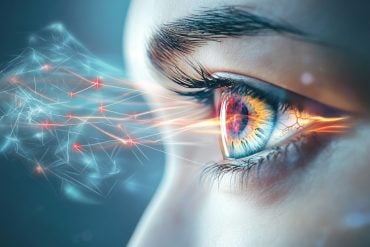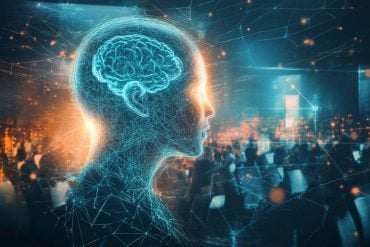Summary: A new study report heartbeat irregularities connected with abnormalities in brain activity may be a biomarker for epilepsy in those who have suffered brain injury or infection.
Source: Penn State.
Heartbeat irregularities connected to brain activity abnormalities may lead to the ability to predict eventual epileptic seizures in subjects who suffered physical or infectious brain insults, according to Penn State researchers who studied mouse models of cerebral malaria, which often causes epilepsy in those who survive.
“We were developing, in a project led by Steven Schiff (Brush Chair Professor of Engineering in the Departments of Neurosurgery, Engineering Science and Mechanics and Physics, and director of the Center for Neural Engineering), a mouse model for epilepsy induced by cerebral malaria, a disease that causes rapid coma and death in children aged 2 to 5,” said Bruce Gluckman, professor of engineering science and mechanics, neurosurgery and biomedical engineering and associate director, Penn State Center for Neural Engineering. “Typically, with treatment, only about 80 percent of infected individuals survive. Of our mouse survivors, 75 percent developed spontaneous seizures.”
Cerebral malaria causes death and brain injuries, including epilepsy in Africa and East Asia where those strains of malaria are endemic. However, other diseases and physical trauma also cause injuries that eventually lead to epilepsy. Acquired epilepsy does not occur immediately after brain injury. Visible symptoms can occur months to years afterwards, according to Gluckman.
“Fatemeh was looking at the data for the signature of a sleep state when she noticed that there were times in the animals when they appeared to miss a heartbeat,” said Gluckman. “The beat-to-beat intervals were really long and associated with abnormal brain activity.”
Fatemeh Bahari, graduate student in engineering science and mechanics, brought the coincidence of heart and brain anomalies to Gluckman, noting that these occurred only in mice that later developed seizures.
“First I saw the beat-to-beat interval and it looked like something,” said Bahari. “I took it to Dr. Gluckman and he said ‘prove it.'”
Gluckman suggested that Bahari show, in more detail, that there was a relationship between the anomalous heart and brain readings, and also show that they could predict which mice would develop epilepsy. They report the results of that work today (Aug. 27) in the Journal of Neuroscience.
Bahari’s initial investigation looked only at very large deviations in heart rhythm and brain waves. Her subsequent study relaxed the restriction of 1.5 times the normal interval of heartbeats and instead used an empirical statistical approach to determine the normal intervals for each individual. She then located any abnormalities, even small ones.
The researchers correlated the more relaxed heart-rate abnormalities to similarly relaxed indications of unusual brain activity. They found that anomalous brain activity slightly preceded the heart rate anomalies. In the initial experiment, spearheaded by Paddy Ssentongo, who is now assistant research professor at the Center for Neural Engineering and Engineering Science and Mechanics, the researchers used electrocardiographs and electroencephalographs to monitor the heart rates and brain waves, respectively.
The researchers had a population of 13 mice that survived cerebral malaria suitable for analysis. Nine of those mice eventually developed seizures, while four did not. Another four mice never had malaria, but received the same antibiotic treatment as the diseased mice and were the control group. None of the control group developed epilepsy. From these 17 animals, the researchers had 788 full recording days of heart and brain measurements.

Using the individualized algorithm for the mice, the researchers were able to determine for each recording day which mice would develop epilepsy with 100 percent accuracy, without tuning or otherwise manipulating the data.
“There is currently no biomarker to determine who will develop epilepsy after a brain insult,” said Gluckman. “With this delayed coincidence from brain to heart, we can clearly separate the mice that became epileptic from those that did not, weeks before development of epilepsy.”
He suggests that these finding will likely be applicable in other models of acquired epilepsy. The results allow for tracking the long-term development of epilepsy and could not only identify individuals at risk, but also show when treatment is not working or how well it works.
“We want to repeat this analysis using data from epileptic patients,” said Gluckman.
The researchers have filed a provisional patent on this work and continue with their work on malaria as well.
Funding: Citizens United for Research in Epilepsy, National Institutes of Health, Pennsylvania Department of Health Tobacco Funds and a Penn State Graduate School Academic Computing Fellowship to Bahari supported this research.
Source: A’ndrea Elyse Messer – Penn State
Publisher: Organized by NeuroscienceNews.com.
Image Source: NeuroscienceNews.com image is in the public domain.
Original Research: Abstract for “A Brain-Heart Biomarker for Epileptogenesis” by Fatemeh Bahari, Paddy Ssentongo, Steven J. Schiff and Bruce J. Gluckman in Journal of Neuroscience. Published August 27 2018.
doi:10.1523/JNEUROSCI.1130-18.2018
[cbtabs][cbtab title=”MLA”]Penn State”Heart-Brain Connection Could Be Predictive Biomarker for Epilepsy.” NeuroscienceNews. NeuroscienceNews, 27 August 2018.
<https://neurosciencenews.com/heart-brain-epilepsy-9754/>.[/cbtab][cbtab title=”APA”]Penn State(2018, August 27). Heart-Brain Connection Could Be Predictive Biomarker for Epilepsy. NeuroscienceNews. Retrieved August 27, 2018 from https://neurosciencenews.com/heart-brain-epilepsy-9754/[/cbtab][cbtab title=”Chicago”]Penn State”Heart-Brain Connection Could Be Predictive Biomarker for Epilepsy.” https://neurosciencenews.com/heart-brain-epilepsy-9754/ (accessed August 27, 2018).[/cbtab][/cbtabs]
Abstract
A Brain-Heart Biomarker for Epileptogenesis
Post-injury epilepsy is an unpreventable sequela in as many as 20% of patients with brain insults. For these cases biomarkers of epileptogenesis are critical to facilitate identification of patients at high-risk of developing epilepsy and to introduce effective anti-epileptogenic interventions. Here, we demonstrate that delayed brain-heart coincidences serve as a reliable biomarker. In a murine model of post-infection acquired epilepsy, we utilized long-term simultaneous measurements of the brain activity via electroencephalography (EEG) and autonomic cardiac activity via electrocardiography (ECG) to quantitatively track brain-heart interactions during epileptogenesis. We find that abnormal cortical discharges precede abnormal fluctuations in the cardiac rhythm at the resolution of single beat-to-beat intervals. The delayed brain-heart coincidence is detectable as early as the onset of chronic measurements — 2 to 14 weeks prior to the first seizure — only in animals that become epileptic, and increases during epileptogenesis. Therefore, delayed brain-heart coincidence serves as a biomarker of epileptogenesis and could be used for phenotyping, diagnostic, and therapeutic purposes.
Significance Statement:
No biomarker that readily predicts and tracks epileptogenesis currently exists for the wide range of human acquired epilepsies. Here, we utilized long-term measurements of brain and heart activity in a mouse model of post-infection acquired epilepsy to investigate the potential of brain-heart interaction as a biomarker of epileptogenesis. We found that delayed coincidences from brain to heart can clearly separate the mice that became epileptic from those that did not weeks before development of epilepsy. Our findings allow for phenotyping and tracking of epileptogenesis in this and likely other models of acquired epilepsy. Such capability is critical for efficient adjunctive treatment development and for tracking the efficacy of such treatments.






